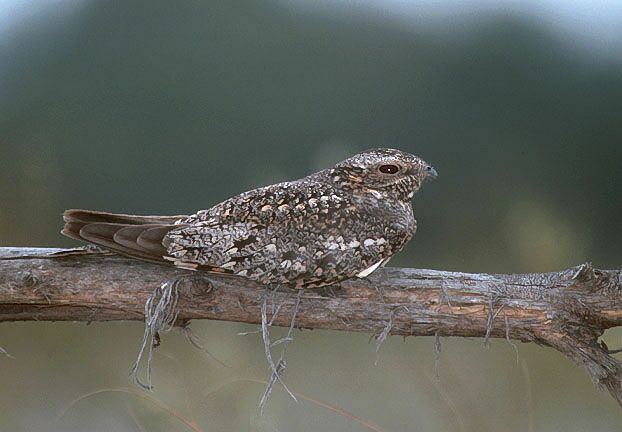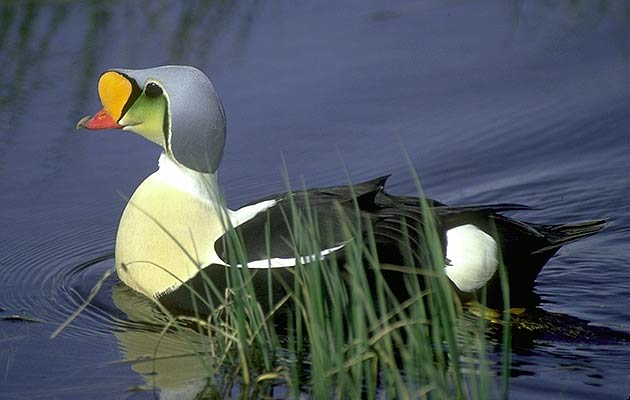
QUIZ 19
A common large hummingbird of the coffee plantations and forests of Puerto Rico's central and western mountains to which it is endemic. Both sexes can be readily distinguished by their relative large size and entirely emerald green underparts. The Puerto Rican Emerald, which occurs in the same habitat, is much smaller and has a notched tail. The Green Mango is irregularly seen on the coast, particularly in the western portion of the island where, in many localities, it appear to be seasonal, taking advantage of flowering seasons of certain plants, and where it may be found in association with the Antillean Mango. As is the case with all five resident hummingbirds in Puerto Rico, this species feeds to a large extent on animal matter, primarily insects and spiders. These are gleaned from among the tree limbs, leaves and bark, as well as from flower corollas. Undigested animal remains are formed into minute pellets and regurgitated. The Green Mango also relies on nectar for sustenance and among its favorite are the yellow flowers of Mahoe (Pariti tiliaceum), Rangoon Creeper (Quisqualis indica) and various Trumpet Creepers (Ipomoea). Where tobacco is grown, this hummer has been blamed for eating tobacco seeds. As investigations indicate that animal matter accounts almost entirely for the solid portion of this bird's diet, it would appear that there is no basis to this allegation. The call, a trill-like twitter, is infrequently heard, and the call note is a hard "tick".
Bird photographed by Greg Lasley.


QUIZ 20
Originally fairly numerous within its North American range, the Lesser Nighthawk declined with loss of open, arid habitat. These birds have soft, cryptically colored plumage with elaborate blotching, barring and streaking. The wings are relatively long, with pointed tips reaching the end of the tail, by contrast with the relatively short tail of the Common Nighthawk (Chordeiles minor), with wing tips extending beyond tip of tail. They are also smaller, with buff background to dark barring below, with buff spots on inner primaries. Their wingpatches are often smaller and duskier. Both species have variations of grey to dark brown upperparts, with white wing patches, throat and tail band. Juveniles and females, like this bird, lack the tail band and white patches and have a buff throat. The Antillean Nighthawk (Chordeiles gundlachii) is restricted to South Florida and presents more buff below. The Chuck-will's-widow (Caprimuligus carolinensis) has a large reddish brown throat and a brown plumage mottled with black spots and streaks. Among the 21 New World species of Caprimulgus, the European Nightjar (Caprimulgus europaeus), Plain Nightjar (Caprimulgus inornatus) and Savanna Nightjar (Caprimulgus affinis) have greyish brown upperparts too, with an indistinct pale buff nuchal collar. The best field mark separating these Nighthawks remains the call, heard in flight.
Bird photographed by Don DesJardin.


QUIZ 21
The breeding male is unmistakable, but easily overlooked among large flocks of Common Eider (Somateria mollissima), and told from males of this species by having most of upperparts as well as underparts black. In summer, the head is pale blue, large and rectangular with bulging forehead and frontal shield, lacking black on crown. The frontal shield is orange and the bill is red. The other plumages are similar to those of Common Eider, but eclipse male never shows white on scapulars but may show white on mantle and white wing-coverts, often visible when on water.
Head shape and structure are the most reliable means to distinguish females and juveniles King from the Common. The head of King is less triangular in outline, having crown flatter and forehead profile slightly bulging, less straight, with whole front portion of head and bill appearing somewhat shorter than on Common Eider. The facial skin also projects less far towards eyes and feathering on sides of bill is distinctly rounded, less pointed, not extending as far as nostril. The gape line, which turns noticeably upwards from bill-base, generally bisects an ill-defined whitish area at very base of bill. Finally, females and juveniles have dark flank markings angled, less barred than on Common Eider.
Bird photographed by Roberts French.

Gallery overview
Quiz Statistics
Quiz results
Rules
Hall of Fame
More links !
